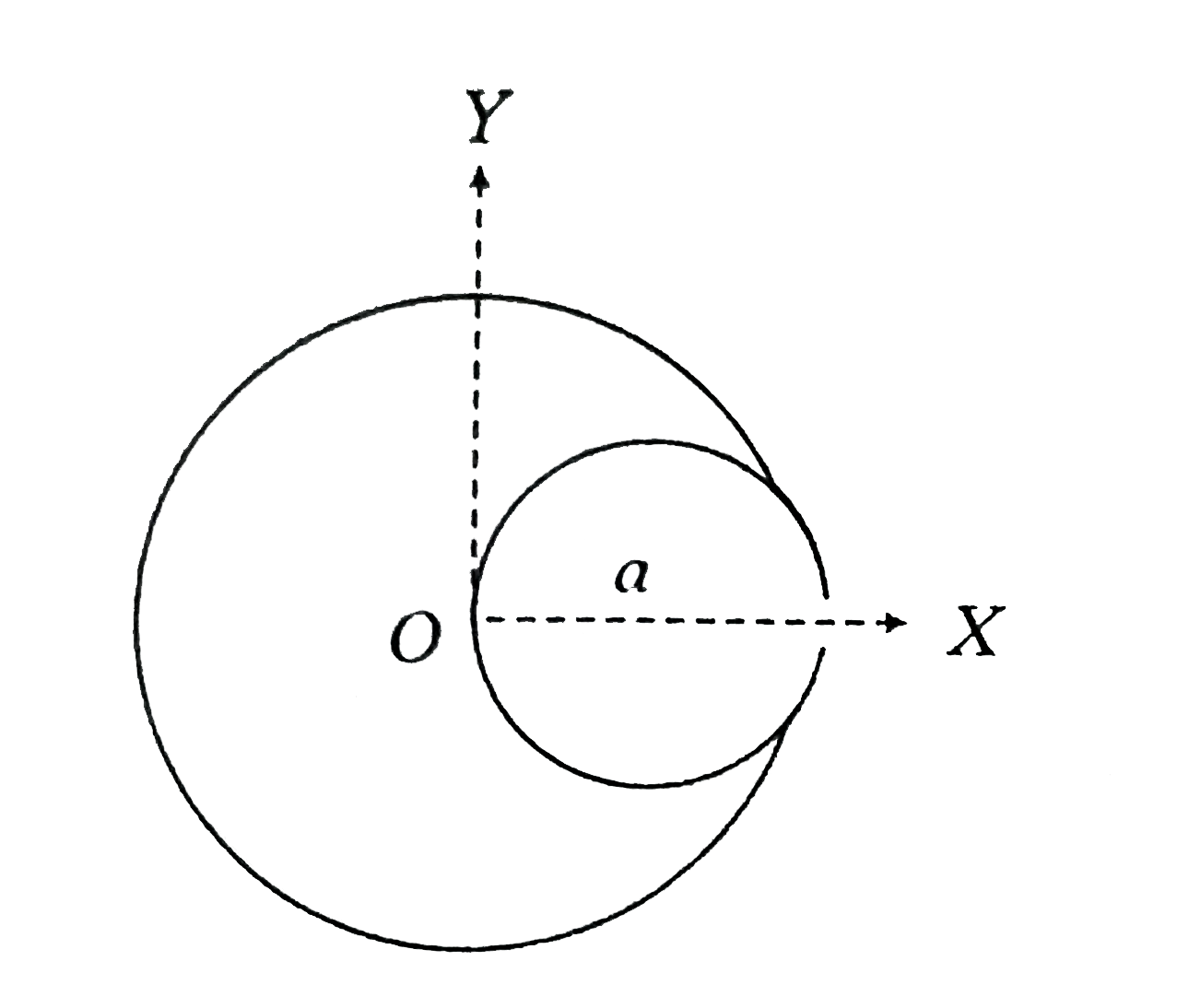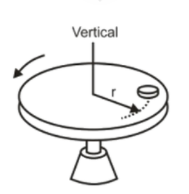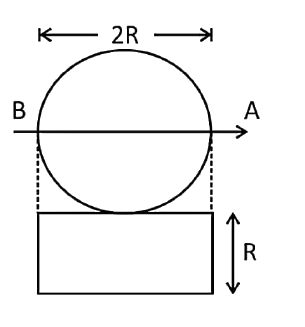A brass disc fits snugly in a hole in a steel plate. Should you heat or cool the system to loosen the disc from the hole ? given that αb>αFe.
The correct Answer is:C
To determine whether to heat or cool the system to loosen a brass disc snugly fitting in a hole in a steel plate, we need to consider the coefficients of linear expansion for both materials.
1. Understand the Problem:
- We have a brass disc that fits snugly in a hole in a steel plate.
- The coefficient of linear expansion of brass (αB) is greater than that of steel (αFe).
2. Define Coefficient of Linear Expansion:
- The coefficient of linear expansion (α) indicates how much a material expands per degree of temperature change. A higher α means the material expands more for the same temperature increase.
3. Heating the System:
- If we heat the system, both the brass disc and the steel plate will expand.
- Since αB > αFe, the brass disc will expand more than the steel plate for the same temperature increase.
- Thus, the brass disc will still fit snugly in the hole, as it expands more than the steel.
4. Cooling the System:
- If we cool the system, both the brass disc and the steel plate will contract.
- Again, since αB > αFe, the brass disc will contract more than the steel plate for the same temperature decrease.
- This means that the brass disc will become smaller relative to the hole in the steel plate, thus loosening the fit.
5. Conclusion:
- To loosen the brass disc from the hole in the steel plate, we should cool the system. This is because the brass will contract more than the steel, allowing the disc to fit more loosely in the hole.
Final Answer:
Cool the system to loosen the brass disc from the hole.
---
- We have a brass disc that fits snugly in a hole in a steel plate.
- The coefficient of linear expansion of brass (αB) is greater than that of steel (αFe).
- The coefficient of linear expansion (α) indicates how much a material expands per degree of temperature change. A higher α means the material expands more for the same temperature increase.
- If we heat the system, both the brass disc and the steel plate will expand.
- Since αB > αFe, the brass disc will expand more than the steel plate for the same temperature increase.
- Thus, the brass disc will still fit snugly in the hole, as it expands more than the steel.
- If we cool the system, both the brass disc and the steel plate will contract.
- Again, since αB > αFe, the brass disc will contract more than the steel plate for the same temperature decrease.
- This means that the brass disc will become smaller relative to the hole in the steel plate, thus loosening the fit.
- To loosen the brass disc from the hole in the steel plate, we should cool the system. This is because the brass will contract more than the steel, allowing the disc to fit more loosely in the hole.
Cool the system to loosen the brass disc from the hole.
Topper's Solved these Questions
- THERMOMETRY,THERMAL EXPANSION & KINETIC THEORY OF GASESBOOK - DC PANDEY ENGLISHCHAPTER - THERMOMETRY,THERMAL EXPANSION & KINETIC THEORY OF GASESEXERCISE - Exercise 20.3
7 Videos
- THERMOMETRY,THERMAL EXPANSION & KINETIC THEORY OF GASESBOOK - DC PANDEY ENGLISHCHAPTER - THERMOMETRY,THERMAL EXPANSION & KINETIC THEORY OF GASESEXERCISE - Exercise 20.4
3 Videos
- THERMOMETRY,THERMAL EXPANSION & KINETIC THEORY OF GASESBOOK - DC PANDEY ENGLISHCHAPTER - THERMOMETRY,THERMAL EXPANSION & KINETIC THEORY OF GASESEXERCISE - Exercise 20.1
5 Videos
- THERMOMETRY THERMAL EXPANSION AND KINETIC THEORY OF GASESBOOK - DC PANDEY ENGLISHCHAPTER - THERMOMETRY THERMAL EXPANSION AND KINETIC THEORY OF GASESEXERCISE - Medical entrance gallary
30 Videos
- UNIT AND DIMENSIONSBOOK - DC PANDEY ENGLISHCHAPTER - UNIT AND DIMENSIONSEXERCISE - Assertion And Reason
2 Videos
Similar Questions
A brass disc fits snugly in a hole in a steel plate. Should you heat or cool this system to losen the disc from the hole ? given that αb>αFe.
View Solution
In the accompanying figure. Line l passes through the origin and the point (2, 4). Line m (not shown) is perpendicular to line l at (2, 4). Line m intersects the x-axis at which point?
View SolutionA uniform disc (of mass M and radius a) has a hole (of radius b) drilled through it. The centre of the hole is at a distance c from the centre of the original disc. What is the moment of inertia of the disc about an axis through the centre of the disc and perpendicular to its plane ?
View SolutionA circular hole of radius R/2 is cut from a circular disc of radius R. The disc lies in the xy-plane and its centre coincides with the origin. If the remaining mass of the disc is M, then
a. determine the initial mass of the disc and
b. determine its moment of inertia about the z-axis.

View SolutionFind the position of center of mass of the uniform lamina shown in figure, if small disc of radius α2 is cut from disc of radius a.

View SolutionA small coin of mass 40 g is placed on the horizontal surface of a rotating disc. The disc starts from rest and is given a constant angular acceleration α=2 rad s−2. The coefficient of static friction between the coin and the disc is μs=3/4 and the coefficient of kinetic friction is μk=0.5. The coin is placed at a distance r=1m from the centre of the disc. The magnitude of the resultant force on the coin exerted by the disc just before it starts slipping on the disc is?

View SolutionA small coin of mass 80g is placed on the horizontal surface of a rotating disc. The disc starts from rest and is given a constant angular acceleration α=2rad/s2. The coefficient of static friction between the coin and the disc is μs=3/4 and cofficient of kinetic friction is μk=0.5. The coin is placed at a distance r=1m from the centre of the disc. The magnitude of the resultant force on the coin exerted by the disc just before it starts slipping on the disc is

View SolutionA small coin of mass 80g is placed on the horizontal surface of a rotating disc. The disc starts from rest and is given a constant angular acceleration α=2rad/s2. The coefficient of static friction between the coin and the disc is μs=3/4 and cofficient of kinetic friction is μk=0.5. The coin is placed at a distance r=1m from the centre of the disc. The magnitude of the resultant force on the coin exerted by the disc just before it starts slipping on the disc is

View SolutionA disc of mass m and radius R is attached to a rectangular plate of the same mass m, breadth R and length 2R as shown in figure. The moment of inertia of the system about the axis AB passing through the centre of the disc and along the plane is I=1α(313mR2).

View SolutionFind the centre of mass of a uniform disc of radius a from which a circualr section of radius b has been removed. The centre of hole is at a distance c from the centre of the disc.
View Solution
